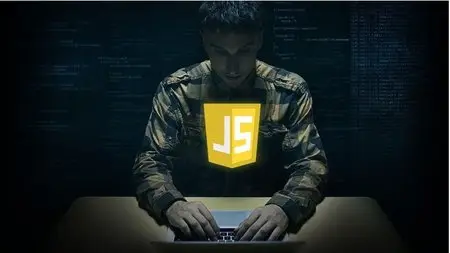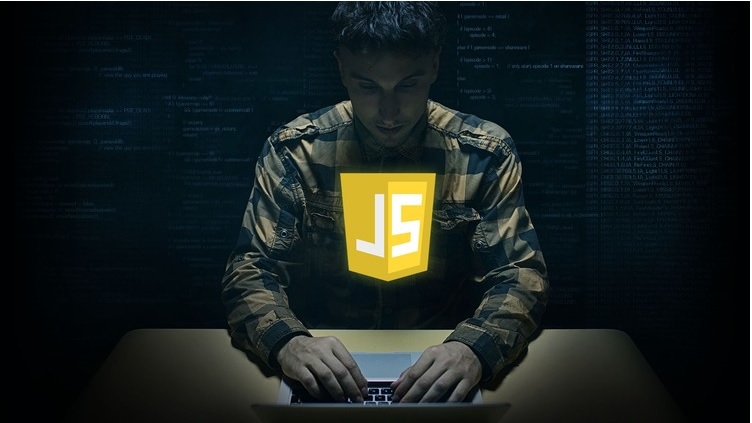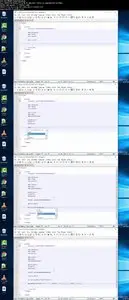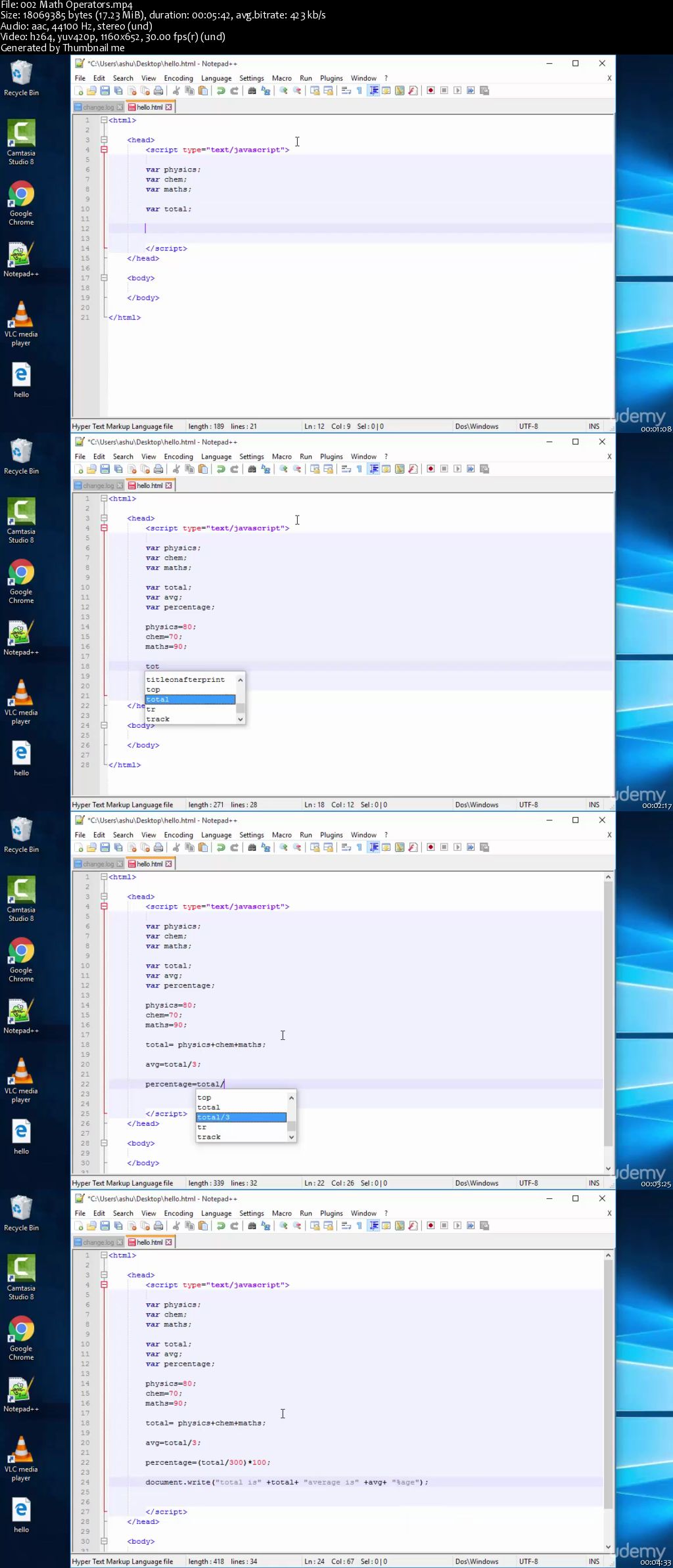The Complete JavaScript Course For Web Development Beginners
WEBRip | MP4/AVC, ~325 kb/s | 1160 x 652 | English: AAC, 68.4 kb/s (2 ch), 44.1 KHz | 560 MB
Genre: Development / Web Development | Language: English | +Project Files
WEBRip | MP4/AVC, ~325 kb/s | 1160 x 652 | English: AAC, 68.4 kb/s (2 ch), 44.1 KHz | 560 MB
Genre: Development / Web Development | Language: English | +Project Files
In this course students will learn the basics of JavaScript and beyond to help them in their web development needs
JavaScript is a high level, dynamic, untyped and interpreted programming language.
In this course we will learn how to embed JavaScript code into HTML code and how JavaScript can be used in order to create interactive websites. We will also learn what are comments and statements in JavaScript and what is their significance in writing JavaScript. In the duration of the course we will also go through the basic data types, which are used in JavaScript in order to store and manipulate the data.
We then study what are variables and will learn the syntax to create variables in JavaScript. Moving along we start with functions, what functions are, where they are used and how to create and call them. Next to that are operators, we study different types of operators in JavaScript, such as the mathematical operators and the assignment operators. After that we will study about the control flow and we study the conditional statements which are used to make decisions. Next in the course is nesting, we go through how a function can be nested in other.
Moving along we learn how to repeat a set of JavaScript statements by using loops and the basic syntax for creating loops. In the next part we study about objects and the concept of object oriented programming in JavaScript. We will also learn what are properties and what are methods. After this we discuss arrays in depth, we learn how arrays can be created and manipulated in JavaScript, also we learn some methods related to arrays.
Finally we learn how to access form and form elements in JavaScript,we also learn how JavaScript can be used to validate HTML forms
Here is What You Will Learn In Each Section of our Course:
- Introduction to JavaScript
- Functions in JavaScript
- Operators in JavaScript
- Control Flow in JavaScript
- Looping in JavaScript
- Event Handling & Objects
- Arrays in JavaScript
- Objects & Forms
- Summary & Conclusion
- And So Much More!
What are the requirements?
- Students should have basic knowledge of HTML
- Notes and Note Sheets
- A Computer with internet access
- An open mind to learning JavaScript
What am I going to get from this course?
- Over 40 lectures and 3.5 hours of content!
- Learn the basics of JavaScript
- Learn basic syntax to write JavaScript code
- Learn basic structure of JavaScript code
- Learn how to use JavaScript to validate forms
- Learn how to perform mathematical operations using JavaScript
What is the target audience?
- Beginner level programmers who want to learn JavaScript
- This course is not for advanced JavaScript students
Curriculum
Section 1: Introduction To JavaScript
Lecture 1 Introduction To JavaScript 03:03
This lecture gives you a brief introduction and overview about JavaScript. You will learn what is JavaScript and where it is used, this lecture also explains the tools which you need to have installed on your computer before starting to learn JavaScript.
Lecture 2 Hello World Program 04:46
In this lecture you will learn:
How to write a simple JavaScript code to display hello world.
How to display an alert on a webpage.
Lecture 3 Comments & Statements 04:42
In this lecture you will learn:
How to write comments in a JavaScript code.
What is the difference between comments and statements.
Basic syntax to write a JavaScript statement.
Lecture 4 What Are Variables 04:15
In this lecture you will learn:
What are variables, why are they used for.
Basic syntax for declaring a variable in JavaScript.
How to use variables in a JavaScript code.
Lecture 5 Different Types Of Variables 05:57
In this lecture you will learn:
What are the different types of variables in JavaScript.
How to declare and use different types of variables.
Lecture 6 Using Strings With Variables 03:24
In this lecture you will learn:
What are strings.
Why are they used for.
How to create a string in JavaScript.
Section 2: Functions In JavaScript
Lecture 7 Using Functions In JavaScript Program 04:36
In this lecture you will learn:
What is a function.
Why are functions used.
How to create functions in JavaScript.
What is the basic syntax to create functions.
How to call function.
Lecture 8 Passing Parameters To Functions 05:07
In this section you will learn:
What are parameters of a function.
How to pass parameters to a function.
What is the basic syntax to pass parameters.
Lecture 9 Using Multiple Parameters 05:28
In this lecture you will learn:
Why are multiple parameters used for.
How to pass multiple parameters to a function.
Lecture 10 Calling Function From Another 04:18
In this lecture you will learn:
How to call a function from another using JavaScript.
Section 3: Operators In JavaScript
Lecture 11 Assignment Operators 05:28
In this lecture you will learn:
What is assignment operator.
When is the assignment operator used.
What is the basic syntax for using the assignment operator.
Lecture 12 Math Operators 05:42
In this lecture you will learn:
What are math operators.
How to use math operators to perform mathematical operations.
Basic syntax to use math operators.
Lecture 13 Global And Local Variables 06:06
In this lecture you will learn:
What are Global variables.
What are local variables.
What is the difference between a global and local variable.
Section 4: Control Flow In JavaScript
Lecture 14 Using If Statement 05:44
In this lecture you will learn:
What are conditional statements.
Why are conditional statements used.
Where can the if conditional statement be used.
What is the syntax for writing the if conditional statement.
Lecture 15 Using Else Statement 04:14
In this lecture you will learn:
When is else statement used.
What is the basic syntax to write an else statement.
Lecture 16 Nesting 06:59
In this lecture you will learn:
What is nesting.
How to nest multiple loops/statements.
Why nesting of loops/statements is used.
Lecture 17 Complex Conditions 05:48
In this lecture you will learn:
What are complex conditions.
How to use complex conditions in JavaScript.
Lecture 18 Using Switch 06:07
In this lecture you will learn:
What is a switch.
Where is a switch used.
Advantages of using a switch.
What is the basic syntax for writing a switch.
Section 5: Looping In JavaScript
Lecture 19 Looping Part 1- For Loop. 08:12
In this lecture you will learn:
What is looping.
What is a for loop.
When is a for loop used.
What is a basic syntax of writing a for loop.
What are advantages of using a for loop.
Lecture 20 Looping Part 2- While Loop 04:52
In this lecture you will learn:
What is a while loop.
When is a while loop used.
What is a basic syntax of writing a while loop.
What are advantages of using a while loop.
What is the difference between a for loop and a while loop.
Lecture 21 Looping Part 3- Do While Loop 04:12
In this lecture you will learn:
What is a do while loop.
When is a do while loop used.
What is a basic syntax of writing a do while loop.
What are advantages of using a do while loop.
What is the difference between a while loop and a do while loop.
Section 6: Event Handling & Objects
Lecture 22 Event Handling 05:15
In this lecture you will learn:
What is an event.
How to handle an event.
What is event handling.
Why event handling is used in a website.
Lecture 23 Using Objects In JavaScript Program 05:17
In this lecture you will learn:
What are objects.
Why objects are used in JavaScript.
Lecture 24 Creating Objects 07:55
In this lecture you will learn:
How to create objects in JavaScript.
Basic syntax to create JavaScript objects.
Lecture 25 Initializing Objects 04:29
In this lecture you will learn:
How to initialize an object.
Why Objects are initialized.
What are the ways to initialize objects in JavaScript.
Lecture 26 Adding Methods To Objects 07:18
In this lecture you will learn:
What are methods.
How can methods be added to JavaScript Objects.
Section 7: Arrays In JavaScript
Lecture 27 Arrays 04:40
In this lecture you will learn:
What are arrays and why are they used for.
How to create/declare an array in JavaScript.
What is the basic syntax to create an array.
Lecture 28 Creating Arrays By Other Methods 02:59
In this lecture you will learn:
How to create arrays using multiple methods.
Lecture 29 Array Methods 03:28
In this lecture you will learn:
What are array methods.
Where are array methods used.
How to use array methods in JavaScript.
Lecture 30 Join & Pop 06:40
In this lecture you will learn:
What is a join method.
How to convert array elements into string using join.
What is a pop method.
Where is a pop method used.
Lecture 31 Reverse & Sort 05:49
In this lecture you will learn:
What is a reverse method.
What is a sort method.
How are reverse and sort method used in JavaScript.
Lecture 32 Adding Elements Of An Array 05:37
In this lecture you will learn:
How to add elements of an array.
Lecture 33 Printing Array Elements 04:41
In this lecture you will learn:
How to print elements of an array.
Lecture 34 What Are Associative Arrays 03:27
In this lecture you will learn:
What are associative arrays.
Where are associative arrays used.
Basic syntax for associative arrays.
Section 8: Objects & Forms
Lecture 35 Math Objects 04:11
In this lecture you will learn:
What are math objects.
Where can math objects be used.
Lecture 36 Date Objects 07:59
In this lecture you will learn:
What are date objects.
Where can date objects be used.
Lecture 37 How To Access Forms 04:36
In this lecture you will learn:
What are forms.
How to create basic forms.
How to access forms using JavaScript code.
Lecture 38 Accessing Form Elements 04:37
In this lecture you will learn:
What are form elements.
How to access form elements.
What are the methods to access form elements.
Lecture 39 Validating A Form 05:20
In this lecture you will learn:
What is form validation.
How to validate a form using JavaScript.
Section 9: Conclusion
Lecture 40 Conclusion 03:01
This will be an overview of the entire course which will cover the following:
What has been covered.
How to further strengthen JavaScript concepts
LabView - Collective Books
Mega E-books Pack (2013)
Malware Centric E-book Collection
Huge Electricity, Magnetism, A..., Healing - EBooks Collection
Premium IT eBooks Collection
Huge Encyclopedias - EBooks Collection
Osprey Publishing - Military History Books Collection
Gale Encyclopedias - Full Pack
IT Books Collection (Basic - Intermediate - Advance)
Medicinal and Aromatic Plants - 50 Volume Set
Doctor Who ebooks Collection
Learning HTML Ultimate Collection
Comprehensive Robotics Books Collection
Great Royal Web Design Pack
Civil Engineering Geotechnical books
Luftwaffe Colours Collection
Many Thanks to Original uploader.
For More Rare Movies Check out my blog!
Download Links:
No Mirrors Please





